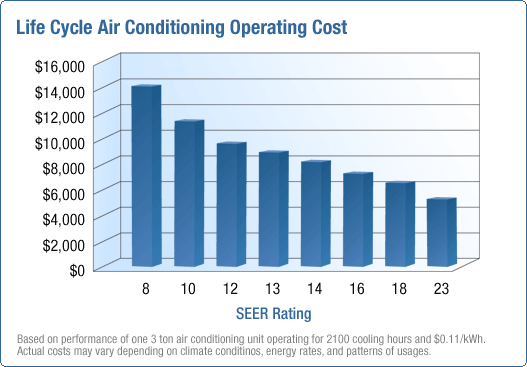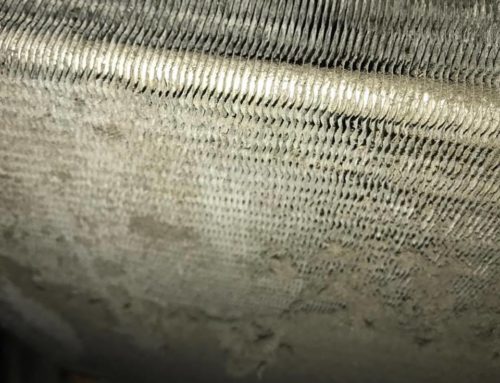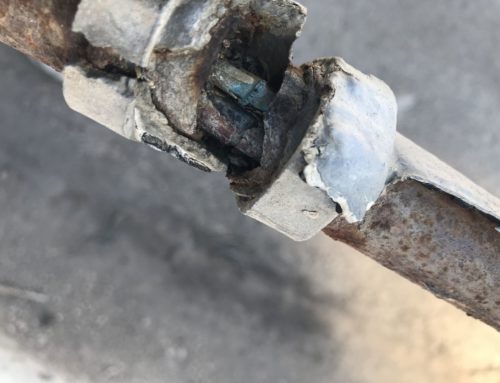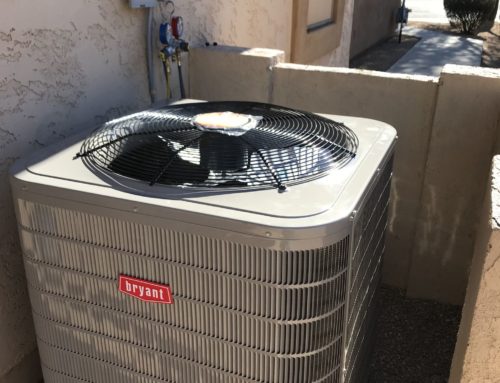If my unit is over 10 years old should I replace it or keep fixing it?
 On January 1st, 2010 the federal government stepped in and told air-conditioning manufacturers that NO ONE could manufacture any systems that are below 14 SEER (in the southwest region.) SEER stands for Seasonal Energy Efficiency Ratio and is an efficiency rating for all air-conditioning systems. “Energy Star” compliant is 14.5 SEER and above.
On January 1st, 2010 the federal government stepped in and told air-conditioning manufacturers that NO ONE could manufacture any systems that are below 14 SEER (in the southwest region.) SEER stands for Seasonal Energy Efficiency Ratio and is an efficiency rating for all air-conditioning systems. “Energy Star” compliant is 14.5 SEER and above.
The government also mandated that all new systems contain HFC R410-A refrigerant instead of the old HCFC stuff, R-22.
HCFC refrigerants contain chlorine and chlorine doesn’t “rain out” of the atmosphere. It burns holes in the upper atmosphere and therefore, is dangerous to the environment.
HFC refrigerants do not contain chlorine and are easily “rained out” of the atmosphere.
Most of the R-22 that is for sale today has been recovered from older systems and has been cleaned and recycled for use in other systems.
This is why the cost of R-22 has skyrocketed over the past few years. R-22 will be phased-out in 2020 and R410-A refrigerant will be the industry standard. R410-A based air-conditioners and heat pumps operate at a much higher pressure than R-22 based systems. You cannot mix and match R410-A and R-22 systems as a result. So, if your system needs R-22 Freon regularly, chances are your system has a leak and it would be more cost-effective to replace the entire system. Most companies nowadays are charging $100 a pound or more for R-22 Freon. R410-A Freon on the other hand, is much more affordable at about $35 dollars a pound. Systems can hold upwards of 7-15 pounds of refrigerant. If you have to remove and dispose of the R-22 Freon from an older unit (before 2010) to do a compressor change out, this can make the repair exponentially higher due to having to install all new R-22 Freon in the system. This is not advised due to the fact that if the new Freon added was ever lost due to a leak in the system at a later date, we would be in the same repair boat having to refill this Freon again at the homeowner’s expense. We can never assure anyone that a refrigeration system is never going to leak Freon. Eventually they start leaking. When they start leaking R-22 Freon, then it is strongly advised that the homeowner get away from that refrigerant as quickly as possible by purchasing a new R410-A system.
If you have a leak in your R-22 system, this can lead to a very large repair bill and could quite conceivably happen again. So, you can see why this would cause people to lean towards replacement of their system as it is more cost-effective to do so. The faster homeowners get away from R-22 based air-conditioners and heat pumps the better as far as we are concerned.
More About Patriot Air Inc.
Social Media
Friend us on FaceBook
Follow us on Twitter
Google+ Patriot Air Inc






